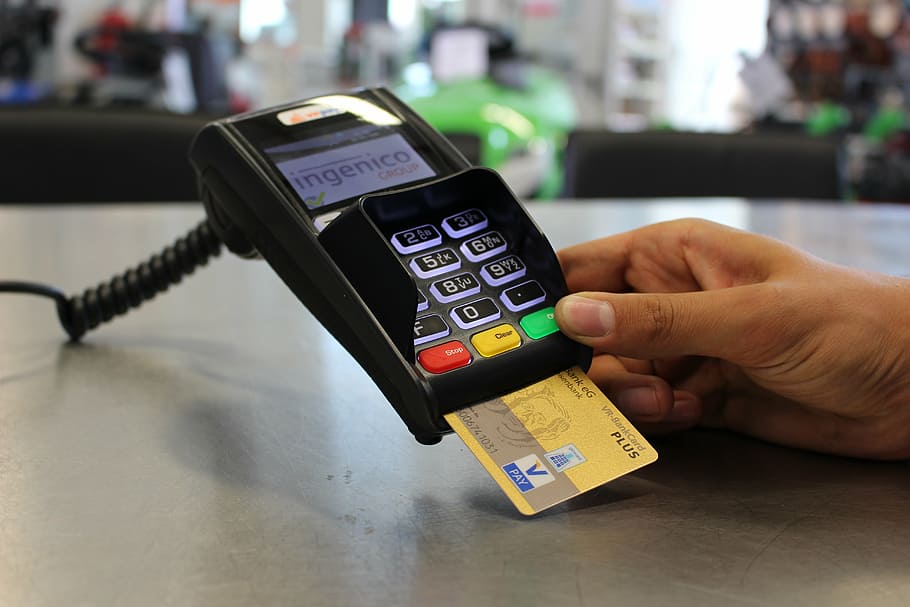7 Simple Steps to Changing Banks Without Stress
7 Simple Steps to Changing Banks Without Stress | Complete Guide

Transferring funds from one bank to another does not have to be difficult. The most important thing is to understand how to switch banks – you don’t want to go from bad to worse.
While switching banks is a good idea, making the initial decision can be difficult. People are concerned that they will lose their money or face additional hardships. This, however, is not the case! You can easily switch banks while not losing any money.
Also read: American Express works with which Credit bureau
People switch banks for a variety of reasons. Some examples include moving to another state, high rates, surcharges, and other financial inconveniences.
If you are experiencing either of these problems, it may be time to switch banks.
Grab a beer if you can, and we’ll show you how to change banks without stress!
How Can I Change Banks Quickly?
Changing banks does not have to be a stressful experience. Regardless of your reason, switching banks is simple.
Let’s look at how to easily switch banks.
1. Choose a New Bank
The first step in switching banks is to choose a new bank that will provide you with a better banking experience, such as a good savings rate, active mobile banking, and good customer service, among other things.
Set no limits to your selection criteria and investigate all banking platforms before making a decision. Check out credit unions, traditional banks, and online banks as well.
Don’t worry, I’ll explain everything below.
The Credit Union
These are customer-owned financial entities. Because its members own it, it operates at a non-profit rate and offers good credit to its members.
Traditional financial institutions
These are traditional banks (i.e. banks with branches all over). Despite their age, they provide a variety of services and convenience to their users.
Online Banking
Its services are available online, as the name suggests. You do not need to communicate in order to conduct your financial transactions. As a result, they compensate with low interest rates and a positive banking experience.
Before switching banks, make sure you thoroughly review the new bank’s requirements to ensure that it meets your requirements.
2. Establish a New Bank Account
After you’ve decided on a new bank, the next step is to open an account with them. Fortunately, opening an account is a simple process. You can go to the branch and the staff will walk you through the steps. If it’s an online bank, simply follow the instructions on their website.
It is not a stressful process in either case.
These documents would be required.
Identification (such as a driver’s licence)
Personal information
Social Security Number Utility Bill
Name and contact information for the employer (if setting up automatic deposits)
You would also be required to deposit a certain amount of money as specified by the bank. This sum is used to open or keep the account open.
3. Enable all automatic payments.
After successfully creating a new account, you can proceed to set up all of your automatic payments. That is, bills linked to your account that are paid for automatically when they expire. Rent, Netflix subscription, power bills (electricity or gas), telephone bills (landline and mobile phone), water and sewer bills, and taxes are all examples of payments.
Change your bank account information in the section where these payments are made, such as PayPal. Also, notify your employer of your new account information so that your paycheck is not sent to your old account.
If you opened a new bank account to avoid fees, keep in mind that you may need to transfer more funds to cover your bills.
See? Changing banks isn’t so difficult. Let us proceed to the next step.
4. Transfer Your Entire Funds
Proceed with the transfer of funds from your old account/bank to the new bank. Keep some money in your old account, however, to cover any missed automatic payments.
Aside from carrying cash from one bank to the other, you can make the transfer using electronic payment methods and certified checks. However, both will keep your funds for a few days.
5 Activate Your New Account
Now that your new account is open, has funds, and is receiving income, you can use it to pay bills, go shopping, or do whatever you want with it.
Do not withdraw or make any transactions from your old account, and do not close it.
For at least two account statement periods, keep an eye on your old account.
Because you transferred all of your debits and credits to the new account, your old account should be empty. If any transactions appear, resolve them with your old bank as soon as possible.
6. Deactivate Your Account
You can close your old account now that you’ve started using your new one and are certain it serves no purpose.
To close the account, you may need to send a letter or visit the bank with your ID and other documents. Before you leave, make sure your old bank provides you with a document stating that the account has been closed.
Keep this in a safe place as it will protect you if they fail to close the account.7 Simple Steps to Changing Banks Without Stress
7. Keep an eye on your old account.
Do not simply stop using your old account and assume it has been closed. You’ll need documentation from the bank proving that they are aware you closed your account. This is due to the fact that banks will occasionally reopen accounts that customers have closed without informing them.
“It’s not even your fault that they might reopen it.” When a check arrives, the bank may reopen the account and charge you a late fee, an overdraft fee, and before you know it, you’re getting a call saying you owe the bank $100 and you’re not even aware that the bank reopened your account. “It’s known as a Zombie account,” Banks explains.
As a result, schedule a call to your old bank a month after closing your account to confirm that the account is still closed.
Also read: How to avoid Cryptocurrency taxation in Australia
Why Do People Switch Banks?
People switch banks for a variety of reasons. It could be due to excessive bank fees, poor customer service, outdated bank technology, or even an inconvenient ATM.
When all of these issues persist and the bank fails to provide a satisfactory response, people are forced to switch to a better bank with a positive banking experience.7 Simple Steps to Changing Banks Without Stress
How can I move money from one bank to another?
Here’s how to change banks:
- 1 Create a new account.
2 Make a list of all automatic bill payments and outstanding checks.
3 Change Your Automatic Payments to Your New Bank
4 Change your direct deposits to the new bank.
5 Connect your savings and checking accounts.
6 Maintain both accounts open.
7 Delete the previous checking or savings account.
How do I move a large amount of money between banks?
A wire transfer is one of the quickest ways to electronically transfer money from one person to another via a bank or a nonbank provider such as Wise, formerly TransferWise. You’ll need the routeing number, account number, recipient’s name, and possibly the recipient’s address for a domestic wire transfer.
What is the procedure for transferring direct debits from one bank to another?
To change a Direct Debit mandate, notify the customer, organisation, and bank. Changes to Direct Debit payment details can be made over the phone, through secure online banking, or by visiting your local branch. Changes to a Direct Debit can take up to ten working days to take effect.
How do I close and transfer a bank account?
How to Terminate a Bank Account
- 1 Create a New Account. Your first step should begin with your new account, not the account you want to close.
2 Make changes to automatic and recurring payments.
3 Change Your Direct Deposits.
4 Move Money to Your New Account…
5 Close the Account…. 6 Get Written Confirmation….
7 The Finishing Touches
My Last Thought
If you’ve had a bad experience with your bank or if you’re not comfortable using it, you can change banks.
7 Simple Steps to Changing Banks Without Stress




